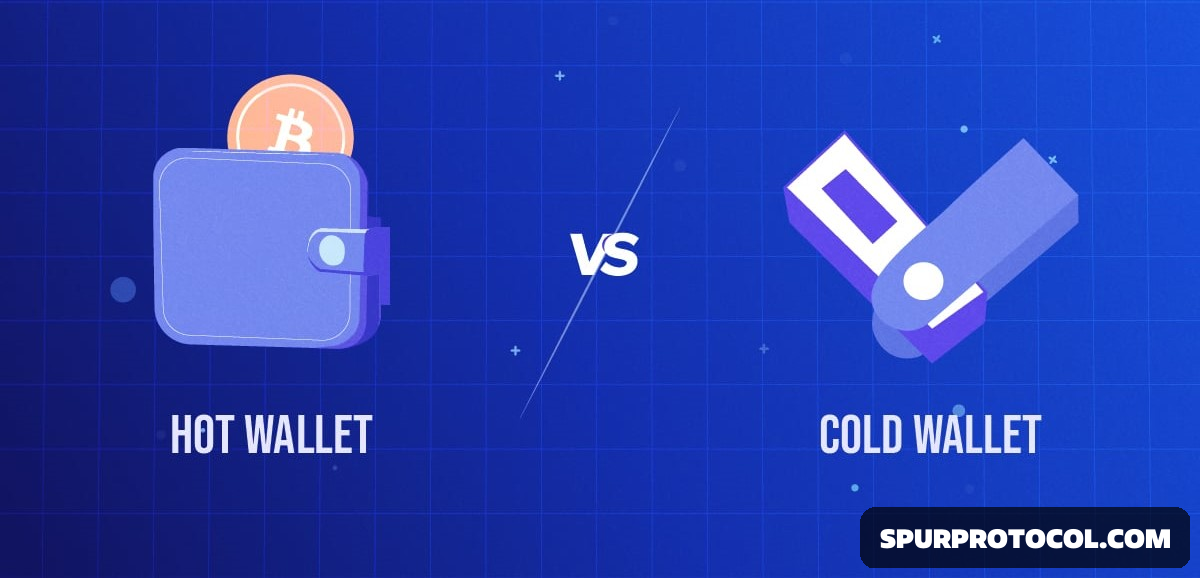Learn the differences between hot storage and cold storage for cryptocurrency and which method suits your needs.
1. Hot Storage: Online and Accessible
What Is Hot Storage?
Hot storage refers to cryptocurrency wallets that are connected to the internet, allowing for easy access and fast transactions. These wallets are often software-based and can be found in applications like web wallets, mobile wallets, and desktop wallets.
Key Features of Hot Storage
- Always Online: Hot wallets are continuously connected to the internet.
- Easy Access: You can quickly send and receive cryptocurrencies, making them ideal for frequent trading or transactions.
- Convenience: Hot wallets often come with user-friendly interfaces and easy integration with exchange platforms.
Advantages
- Fast Transactions: Since hot wallets are always connected, you can send or receive crypto in real-time.
- User-Friendly: Many hot wallets are designed with simplicity in mind, making them accessible even for beginners.
- Access Anywhere: Hot wallets can be accessed from any device connected to the internet, making them convenient for on-the-go usage.
Disadvantages
- Security Risks: Being online means hot wallets are more susceptible to hacking, phishing, and other cyber-attacks.
- Vulnerability to Malware: If your device is compromised, your private keys and funds can be stolen.
- Less Control: Many hot wallets are managed by third-party companies, which means you may not have full control over your assets.
Use Cases
- Frequent Trading: Ideal for traders who need to access their funds quickly and execute transactions in real-time.
- Small Amounts of Crypto: Suitable for users who don’t store large amounts of crypto and prefer ease of use over extensive security measures.
- Mobile Payments: Users who want to make quick payments or purchases using cryptocurrency while on the go.
2. Cold Storage: Offline and Highly Secure
What Is Cold Storage?
Cold storage refers to cryptocurrency wallets that are not connected to the internet. These wallets store private keys offline, making them highly secure against online threats. Cold storage solutions include hardware wallets, paper wallets, and air-gapped computers.
Key Features of Cold Storage
- Offline: Cold wallets are kept completely offline, ensuring they are not vulnerable to online hacking attempts.
- Private Key Security: Private keys are stored on physical devices or paper, away from potential cyber threats.
- Long-Term Storage: Cold wallets are often used for long-term storage of large amounts of cryptocurrency.
Advantages
- Maximum Security: Cold wallets are immune to online attacks, making them the most secure option for storing crypto.
- Protection from Malware: As cold wallets are not connected to the internet, they are not susceptible to malware or phishing attempts.
- Control: Users maintain full control over their private keys and funds, reducing reliance on third-party services.
Disadvantages
- Less Convenient: Since cold wallets are offline, accessing funds can be slower, requiring physical access to the device.
- Risk of Loss: If the cold storage device (e.g., hardware wallet or paper wallet) is lost or damaged, recovery of the crypto can be extremely difficult or impossible.
- Limited Accessibility: You cannot make real-time transactions like you would with a hot wallet.
Use Cases
- Long-Term Holders: Ideal for individuals or institutions who want to store large amounts of crypto for an extended period without frequent transactions.
- Cold Storage for Safety: Used to store funds that don’t need to be accessed regularly, such as for savings or retirement purposes.
- Institutional Investors: Large crypto investors often use cold storage to secure their assets and reduce the risk of loss through hacking.
3. Hot vs. Cold Storage: Key Differences
| Feature | Hot Storage | Cold Storage |
|---|---|---|
| Connectivity | Always online | Offline |
| Security | Lower (vulnerable to online threats) | High (immune to online threats) |
| Convenience | High (easy access for transactions) | Low (requires physical access) |
| Ideal for | Frequent transactions, small amounts | Long-term storage, large amounts |
| Types of Wallets | Web wallets, mobile wallets, desktop wallets | Hardware wallets, paper wallets, air-gapped computers |
| Vulnerability | More vulnerable to hacking and phishing | Safe from hacking, but at risk of loss if not properly secured |
4. Which One Should You Choose?
Both hot and cold storage have their place in the cryptocurrency ecosystem, and the choice largely depends on your needs. Hot wallets are best for frequent transactions and smaller amounts, while cold wallets are better for long-term storage of large amounts of crypto.
In Short
Understanding the differences between hot and cold storage is key to safeguarding your cryptocurrency. Both have their advantages and trade-offs, but the best option depends on how you plan to use your assets. Prioritize security, but also consider the convenience you need for your crypto management.
